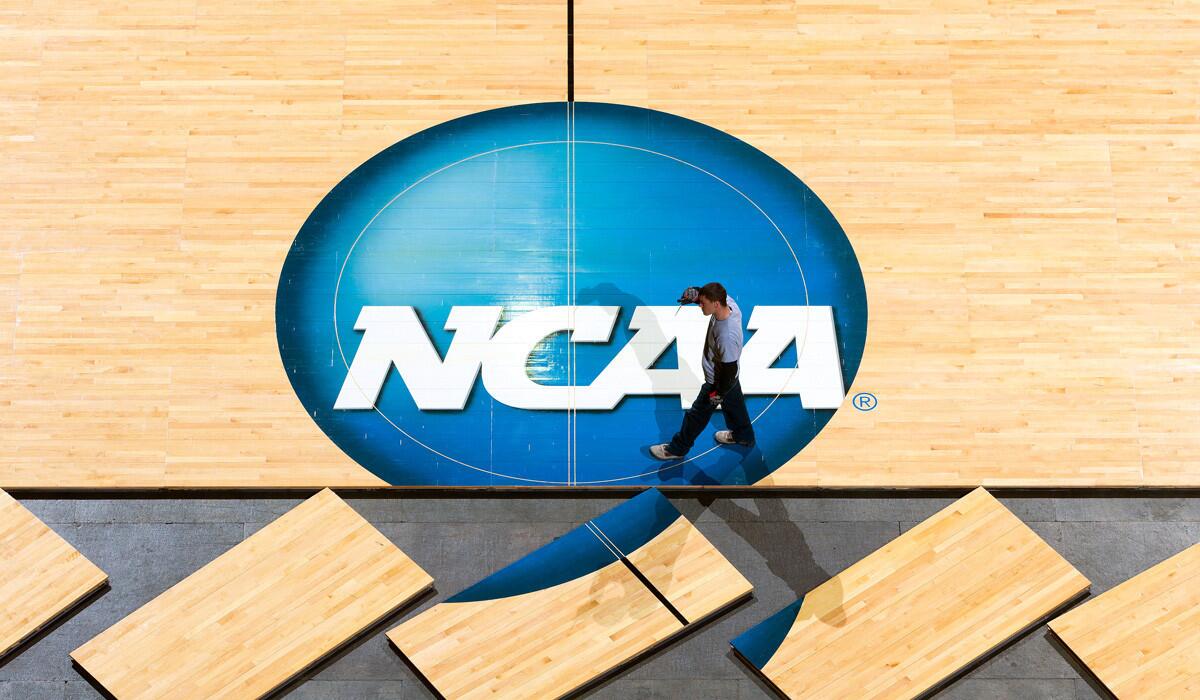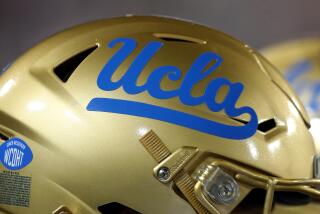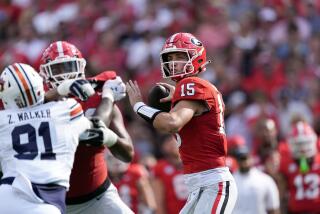NCAA announces huge reduction in revenue payout after cancellation of March Madness

- Share via
Since the cancellation of March Madness and the NCAA’s other winter and spring championship events because of the coronavirus, conferences and schools have been bracing themselves for what the economic impact could be.
The NCAA gave a painful first glimpse Thursday, announcing that its Board of Governors voted unanimously to distribute $225 million in June — $375 million less than the $600 million it had originally budgeted for distribution in April.
For many athletic departments, the eventual disbursement will arrive as a reality check of a murky financial future that likely won’t clear up anytime soon.
The NCAA Board of Governors stressed to members the importance of “planning carefully with less revenue.”
“We are living in unprecedented times not only for higher education, but for the entire nation and around the globe as we face the COVID-19 public health crisis,” Michael V. Drake, chair of the board and Ohio State’s president, said in a statement. “As an Association, we must acknowledge the uncertainties of our financial situation and continue to make thoughtful and prudent decisions on how we can assist conferences and campuses in supporting student-athletes now and into the future.”
The UCLA women’s water polo team was No. 2 in the nation and chasing its first NCAA title since 2009 when the coronavirus outbreak occurred.
The NCAA receives most of its revenue from its March Madness television rights deal with CBS and Turner, which pays the association nearly $800 million per year.
Of the $225 million distribution, $50 million will come from NCAA reserves, the statement said. The NCAA said it also has a $270-million event cancellation insurance policy that will be used to pay off a line of credit that will cover the remaining distribution within a year.
“The Association has prepared for a financial catastrophic event like the one we face now,” Drake said. “While we certainly have challenges ahead, we would be in a far worse position had it not been for this long-standing, forward-focused planning.”
The level of dependence on the NCAA’s annual distribution will vary by conference and school.
“Given the cancellation of the NCAA basketball tournament and other events related to the COVID-19 pandemic, the announcement today by the NCAA regarding a reduced distribution is not unexpected,” UCLA said in a statement. “It is too early to tell how much money each campus will receive, so it would be premature to comment on the specific ramifications for UCLA.
“The financial impact of this pandemic is not unique to college athletics, and is just one of a number of factors that will have to be navigated as we collectively make decisions on how to move forward.”
The USC women’s water polo was ranked No. 1 in the nation when the season was canceled because of the coronavirus pandemic.
USC athletic director Mike Bohn, speaking Monday on the school’s “Trojans Live” broadcast, said he was expecting a 70% reduction in the NCAA distribution. It ended up being 62.5%.
“We’ve been so fortunate to have many of our donors and fans say, ‘How can we help? What can we do to help these student athletes?’ Which is certainly comforting,” Bohn said. “I know that the NCAA is working on insurance elements, working on lines of credit, working on all kinds of solutions to help us deal with [less revenue] at the campus level. Again, those are in play and still really undefined at this point.”
The NCAA said that Division II is projected to receive $13.9 million, a $30-million decrease from last year. Division III is projected to receive $10.7 million, a $22-million decrease from last year.
Times staff writers Ben Bolch and Ryan Kartje contributed to this report.
More to Read
Go beyond the scoreboard
Get the latest on L.A.'s teams in the daily Sports Report newsletter.
You may occasionally receive promotional content from the Los Angeles Times.











